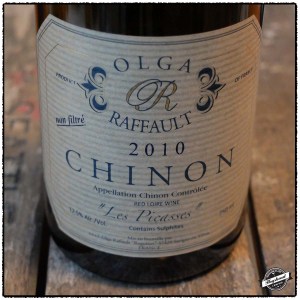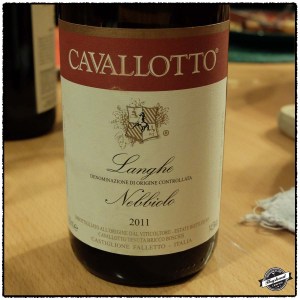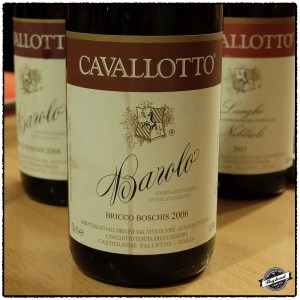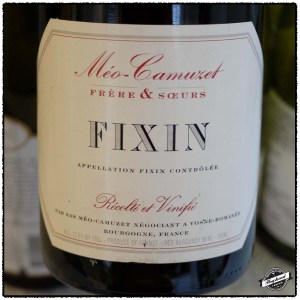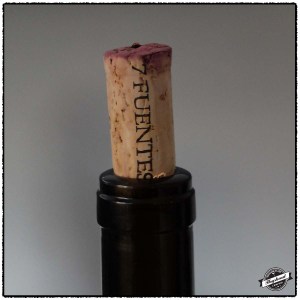Archive
“Free from the excessive humidity of other Washington suburbs”: Our new home in Chevy Chase View
I normally do not write about my private life outside of any wine related activities. However, I am very excited that after ten years of living in Silver Spring we are moving to Chevy Chase View. You might have noticed that the combined process of buying a new house then selling our current house is occupying a significant portion of my time. For the next several months it will continue to be hard to maintain my normal schedule of research and writing. So if there are gaps in my tasting notes or less historical posts you now know why!
Chevy Chase View is a town located north of Bethesda and south of Kensington, just outside of the Beltway. It came into existence in 1909 then was first platted in 1910. Construction during the first dozen years was slow, resulting in just four houses. Despite the lack of construction parcels of land were actively sold and bought. One large parcel, upon which our house would eventually be built, was purchased by investor Charles E. Wire in 1916. In 1923 there was a wave of new activity led by real estate developer Harry M. Martin and Charles E. Wire. It was in this year that Charles E. Wire resubdivided the eastern portion of his large parcel in Chevy Chase View. If the names Martin and Chevy Chase sound familiar that is because Harry M. Martin developed the land around Chevy Chase inside of the Beltway. These parcels are known as Martin’s Additions.
Some 20 houses were eventually built that year in 1923. Harry M. Martin ran a series of advertisements in The Evening Star and The Washington Post. The altitude of Chevy Chase View was regarded as providing cooler temperatures, less humidity, and great views. The Kensington Railway offered alternative transportation if one did not want to drive into the city. The houses were all on large lots each with water, sewerage, and electricity. The very next year Chevy Chase View became a special taxing zone which laid the foundation for the charter and regulations that now govern it. Over the decades both citizens and political committee members have preserved the original feel with the large wooded lots. Chevy Chase View was incorporated as a town in 1993. As a town, it is rather unique for there are only some 300 single-family homes, a swimming pool, and four churches.
Our house was built in 1923 then expanded and fully renovated in 2000. For us this offers the perfect blend of original features such as windows, doors, floors, and hardware along with modern conveniences like dual-zone forced-air heating and air conditioning. There is a large dining room where I will be able to host wine tastings. For the storage of wine there is a basement and for my Madeira, there is a walk-up attic. The house itself sits on a large lot. With both covered and uncovered decks along with a flat backyard, I cannot wait to host my first wine party this summer.
Olga Raffault and G. Descombes from Louis/Dressner
Both the 2010 Olga Raffault, Les Picasses, Chinon and 2013 G. Descombes, Régnié engage you with their aromas then draw you in with contemplative flavors. The Raffault showed the most complexity but it also barely budged over two nights. There is a clear record that this wine ages very well so I suggest you simply bury a few bottles in your basement. The Descombes is an impeccably made wine that will not tire you out as you drink glass after glass. You should try them both. These wines were purchased at MacArthur Beverages.
2010 Olga Raffault, Les Picasses, Chinon – $25
Imported by Louis/Dressner. This wine is 100% Cabernet Franc sourced from roughly 50 year old vines on a riverbank slope with soils of limestone and clay. It was fermented then aged for 12 to 16 months in large casks. Alcohol 12.5%. It had the sort of earthy, complex nose that always makes me wonder how it came to be. There were firm flavors of black and red fruit before the wine became drier with a seamlessly integrated, drying tannic structure and prominent graphite notes. There was a lipsticky middle before a rather delicate, perfumed finish, and earthy aftertaste. There is a sense of lightness but this is a young wine that has some weight and will age very well. ***(*) 2018-2025.
2013 G. Descombes, Régnié – $25
Imported by Louis/Dressner. This wine is 100% Gamay. Alcohol 12.5%. There was a nose of wet tea and scented spices. In the mouth were tart and lean red fruit flavors that took on fresh pepper in the finish. The wine was gently rounded with some weight. The acidity was perfectly integrated as was the moderate, drying structure. It took on some wood notes. *** Now-2020.
Californian diversity
The wines features in today’s post feature a wide variety of styles. My favorites include the 2012 Klinker Brick, Old Vine Zinfandel, Marisa Vineyard, Lodi with its attractive cherry and Manhattan cocktail flavors, for lack of a better description. It simply tastes different. The wine is still young so hold off on opening a bottle for a bit. The 2012 Lioco, Indica Red Wine, Mendocino County returns with very clean red berry flavors and low alcohol. The 2012 Mount Veeder Winery, Cabernet Sauvignon, Napa Valley is well done at a fair price. It offers a good combination of greenhouse infused black fruit, ripeness, minerals, and structure. I rather enjoyed it. Finally, the 2011 SAMsARA, Grenache, Larner Vineyard, Santa Ynez offers a different take on Grenache, that being a uniquely aromatic nose followed by more tart fruit. These wines were purchased at MacArthur Beverages.
2013 Donkey & Goat, Five Thirteen, El Dorado – $34
This wine is a blend of 40% Grenache, 18% Syrah, 18% Mourvedre, 14% Cinsault, and 10% Counoise that was fermented with indigenous yeast in neutral oak vats. Alcohol 14.2%. With only a hint of natural wine aromas, the nose bore higher-toned, citric red fruit aromas. The mouth followed with red grapefruit flavors at the start. There was a ripe, citric pith structure and tart flavors in the back of the mouth. There were ripe, ethereal flavors that puffed up in the finish. This is a wine for the short-term. ** Now-2017.
2012 Klinker Brick, Old Vine Zinfandel, Marisa Vineyard, Lodi – $32
This wine is 100% Zinfandel sourced from vines averaging 85 years of age that was aged for 15 months in 60% new American oak. Alcohol 15.8%. There was enjoyable fruit from the start that had an incense character with both a little fat and weight. There was a light structure that brought subtle spices and wet tobacco. After a few hours of air the fruit developed an attractive core of cherry and Manhattan cocktail flavors. It had some glycerin to the mouth feel. Thought it started to unwind with air it should develop in the cellar. *** 2016-2022.
2012 Lioco, Indica Red Wine, Mendocino County – $22
This wine is 100% old-vine Carignan that was fermented in stainless steel then aged for 11 months in neutral oak. Alcohol 12%. The red fruit on the nose made way to flavors of tart cherries and eventually strawberry. The tart red berries persisted with ethereal black fruit underneath and a slightly powdery texture. Attractive clean flavors. *** Now-2017.
2012 Mount Veeder Winery, Cabernet Sauvignon, Napa Valley – $27
This wine is a blend of 83% Cabernet Sauvignon, 11% Merlot, 3% Petit Verdot, 2% Malbec, and 1% Cabernet Franc. Alcohol 14.5%. The nose preceded the mouth with ripe, greenhouse infused flavors of black fruit. There were powdery tannins, minerals, and a black fruited finish. The acidity supported the wine which filled the mouth. It left flavors of tart black and red fruit in the finish along with a little chocolate. **(*) 2016-2021.
2011 SAMsARA, Grenache, Larner Vineyard, Santa Ynez – $37
This wine is 100% Grenache which was whole cluster pressed, fermented with indigenous yeast then aged 24 months in 100% neutral French oak. Alcohol 14%. The nose was fragrant with notes of creamsicle! In the mouth were clean fruit and almond flavors around a powdery core. There was some weight to the body and a finish that brought both drier flavors and more structure. With air the wine developed more minerality that went with the firm acidity. It took an interesting tart orange, citrus, natural wine bit at the aftertaste. *** Now-2020.
I enjoy a little oak in my South African whites
We tasted through three South African white wines from the 2012 vintage before the single-digit cold spell hit Washington, DC. The 2012 Bouchard Finlayson, Chardonnay, Crocodile’s Lair/Kaaimansgat , Overberg was the most acidity oriented of them all. For me I kept noticing the acidity more than the white fruit flavors. While the profile of the wine might change with age, right now it is perfect for those acidity hounds out there. The 2012 Rustenberg, Chardonnay, Stellenbosch was clearly raised in oak. It is not overwhelming, rather a complement to the yellow, creamy, and spiced flavors. We have enjoyed previous vintages of this wine and with this one, I would recommend holding it until the fall to let the oak integrate more. The 2012 De Morgenzon, Chenin Blanc, Stellenbosch shifts in grape variety and in price. Though young and in need of age it already exhibits dense, rich, tart fruit that has a beguiling petrol or honey flavored middle. Like the Rustenberg, it too needs time in the cellar, but this will develop over a longer period. Both the Rustenberg and De Morgenzon have a lot to offer at their price points. These wines were purchased at MacArthur Beverages.
2012 Bouchard Finlayson, Chardonnay, Crocodile’s Lair/Kaaimansgat , Overberg – $22
Imported by Indigo Wine Group. This wine is 100% Chardonnay that was aged for 8 months in 25% new French oak barrels. Alcohol 13.5%. The color was copper accented golden straw. There was focused white fruit flavors with lively acidity. The wine has some weight but presents itself as lighter with more lively, watering acidity. In fact, the acidity is more noticeable than the fruit. It also has a subtle texture. ** Now-2018.
2012 Rustenberg, Chardonnay, Stellenbosch – $22
Imported by Indigo Wine Group. This wine is 100% Chardonnay sourced from vines on soils of decomposed granite that was aged for 12 months in 40% new Burgundian hogsheads. Alcohol 14%. The wine was a bright straw color with toasty yellow and white fruit aromas. In the mouth were somewhat weighty flavors that expanded quickly. The acidity was lively from the start whereas the toast notes slowly built through the finish. The wine takes on a creamy and spiced middle with creamy finish and a lighter aftertaste accented by some toast. *** Now-2017.
2012 De Morgenzon, Chenin Blanc, Stellenbosch – $33
Imported by Cape Classic. This wine is 100% Chenin Blanc sourced from 41 year old vines that was fermented with indigenous yeast in French oak barrels. Alcohol 14%. The color was a golden straw. The nose was floral with chalky yellow fruit aromas. In the mouth the flavors reflected the color with dense, rich, tart yellow fruit that had plenty of texture. There was a petrol-like, perhaps honey, flavor in the middle, ripe lemon notes in the finish, and a persistent aftertaste. ***(*) Now-2020.
Declassified Vacqueyras from Roucas Toumba
The estate of Roucas Toumba near Vacqueyras has been in the Bouletin family since the 18th century. Historically, the fruit was delivered to cooperatives and sold to Beaucastel. It was only in 2000 that wine was first made at the estate. I tried the 2010 Roucas Toumba, Les Grands Chemins which is primarily declassified Vacqueyras from old-vine Grenache and Carignan planted in 1948. This is a lovely wine ready from short-term cellaring. There is already good complexity with that sense of warmth from Vacqueyras. While I would hold off drinking this for a year, you might be excused for cracking a bottle given the record-breaking cold weather. This wine was purchased at MacArthur Beverages.
2010 Roucas Toumba, Les Grands Chemins – $18
Imported by Potomac Selections. This wine is a blend of 65% Grenache, 25% Carignan, and 10% Syrah that was aged for six months on concrete vats. Alcohol 14%. There were spiced berry aromas and occasional wafts of animale notes. In the mouth were ripe black fruit flavors with the structure framing the entire wine. A mineral, black acidity developed on the tongue that worked towards a ripe, spiced finish with cola like flavors. Perhaps clean, macerated black fruit is a better description. The wine was firm at the end with a drying aftertaste. *** 2016-2025+?
Brachetto from Italy and Pinot Noir from Germany
I was still rather full from breakfast and lunch when I walked into Cork Market on Monday. I decided I wanted to drink lighter wines that evening and immediately knew that my sole purchase had to be the 2012 Matteo Correggia, Anthos. For the third vintage in a row, this wine proved thoroughly pleasing. It is unique in aroma and flavor with orange peel, spices, and black tea making it a wine worth seeking out. The 2011 Becker Family, Pinot Noir, Pfalz is a solid example of German Pinot Noir. It could be better in a year, I do not have enough experience to guess, but if you try it now be sure to double-decant it a few hours ahead of time. The Correggia was purchased at Cork Market & Tasting Room and the Becker at MacArthur Beverages.
2012 Matteo Correggia, Anthos – $18
Imported by The Country Vintner. This wine is 100% Brachetto sourced from the Anthos vineyards. It is located at 300 meters on soils of sandy with a small bit of silt and clay. It was fermented in stainless steel for up to four days. It was then racked to a large stainless steel tank for eight months of aging. Alcohol 13.5%. The light color in the glass makes way to an aromatic nose of orange peel and spices. The flavors follow the nose but were more robust than expected. There was watering acidity, a fresh herbal middle then notes of sweet, Early Grey tea in the long aftertaste. It tastes young so should drink well for a few years. *** Now-2018.
2011 Becker Family, Pinot Noir, Pfalz – $18
Imported by Rudi Wiest. This wine is 100% Pinot Noir sourced from vines on soils of loess, marl, chalk, and clay. Alcohol 13.5%. The nose eventually opened to smell of the varietal. The flavors were lively on the tongue with sharp acidity on the tongue tip. The wine rounded out some but bore firm, linear flavors into the finish. It was a little woodsy with less flavor in finish. ** Now-2017.
Meat and minerals in the 2009 Méo-Camuzet Frère et Sœurs, Fixin
My mother and mother-in-law were up in Maryland this past holiday weekend. As they had only seen Lou’s kitchen and wine cellar renovation we stopped by for a quick visit. We could not arrive empty handed so I double-decanted my most recent dump-bin find, the 2009 Méo-Camuzet Frère et Sœurs, Fixin. With glass in hand we took a quick look around the cellar. The wine smelled good from the start but it was later that night that it showed best. Both the aromas and flavors with in sync with meat, minerals, and the slightest hint of maturity. If you are lucky enough to have a few bottles then hold off drinking them for several more years. This wine was purchased at MacArthur Beverages.
2009 Méo-Camuzet Frère et Sœurs, Fixin – $30
Imported by MacArthur Liquors. This wine is 100% Pinot Noir sourced from 25 and 50 year old vines on soils of clay and limestone. Alcohol 13.5%. There was a meaty, mineral, incense nosed that was followed by the flavors in the mouth. There were minerals notes, polished wood, and hard red fruit enlivened by almost juicy acidity. The wine developed over several hours but remained young and fresh with just a touch of maturity. The black mineral flavors took on more perfume towards the finish. This was a very attractive wine that still needs several years in the cellar. ***(*) Now-2025
Pepper notes from the Canary Islands
Wine from the Canary Islands is currently available in Washington, DC, in the form of 2013 Suertes del Marqués, 7 Fuentes, Valle de La Orotava, Tenerife. It was only last year that I tried this wine in the form of the previous vintage. You may read about it in my post “Very rare liquors”; Centuries Old Tasting Notes and A New One of Tenerife Wine. This particular bottle was locked down tight for the first few days. It developed an attractive pepper not but not the exotic spices of the previous vintage. Perhaps it just needs some quiet time. This wine is available at MacArthur Beverages.
2013 Suertes del Marqués, 7 Fuentes, Valle de La Orotava, Tenerife – $20
Imported by Eric Solomon European Cellars Selections. This wine is a blend of 98% Listan Negra and 2% Tintilla sourced from 10-100 year old vines from three parcels located at 400-650 meters. The fruit was separately fermented in stainless steel then aged for eight months in concrete and French oak casks. Alcohol 13%. The color was a medium, youthful looking cranberry grape. The nose took about two days to shake off some funk before it finally revealed balsam and pepper. In the mouth was a fruited start with grapey flavors mixing with pepper. The flavors were clean, had a cool aspect, and were delivered in a not-quite firm but rather linear manner. It finished with tart flavors, acidity, and some fine tannins before the tangy aftertaste. Needs time in the cellar. ** 2017-2021.
A trio from Virginia: Tarara Winery and The Bone Yard
After my series of posts about Thomas Jefferson it seemed only appropriate that I quench my thirst with some wine from Virginia. Tarara Winery celebrated their 25th anniversary last year. Though I was unable to attend the celebration, Shawn Sisson sent me samples so I could join in on the fun. You may recognize the name because it was two summers ago that the vibrant 2011 Boneyard White became a fixture at my house. This time I started with a pair of wines from the balanced 2012 vintage. The 2012 Tarara Winery, Nevaeh White offered toasted accents with green apple that had a fair vein of acidity. I thought the 2012 Tarara Winery, Cabernet Franc was a good reflection of the vintage with its aromatic nose and flavors bearing both weight and racy hints. It had a good mix of fruit and greenhouse florals which was, quite frankly, rather enjoyable. From a hot and dry vintage came the 2010 The Bone Yard, Syrah. This was a mouth filling, savory, and textured wine that took me away from locality. This powerful wine bears its long upbringing in Virginian oak well but it does need some time to integrate the flavors. It will already appeal to many people but I recommend you hold on to your bottles to see how it develops.
2012 Tarara Winery, Nevaeh White – $35
This wine is a blend of 62% Chardonnay and 38% Viognier that was barrel fermented with indigenous yeasts then aged for ten months. Alcohol 13%. There was a light, golden yellow color that matched the nose with its toast accented aromas of yellow fruit. In the mouth were some tart green apple flavors in the start followed by a toast hint in the middle. There was a fair zing from the acidity that was felt on the front and sides of the tongue. The wine took on a rounded feel along with a hint of stones and a long finish with salivating acidity. ** Now-2016.
2012 Tarara Winery, Cabernet Franc – $25
This wine is 100% Cabernet Franc that was aged for 12 months in new and used Virginian oak. Alcohol 13%. The nose revealed cherries and greenhouse scented fruit. In the mouth was brighter red fruit accented by a greenhouse floral start, tart fruit, and a black fruited finish. With air the wine took on some weight, racy black hints, and showed attractive salivating acidity. This opened up well. ** Now-2018.
2010 The Bone Yard, Syrah – $100
This wine is a blend of 96% Syrah and 4% Viognier that was co-fermented with indigenous years in stainless steel then aged for 38 months in Virginian oak. Alcohol 15%. There were mouth filling flavors of savory, black fruit, stones, and generally salivating flavor. The ripeness played it close but with extended air the tart black fruit developed a red hint and took on more texture. This savory black wine had stones in the finish, smooth tannins, and a vanilla hint at the end. It needs a little time to integrate the oak. *** Now-2020.




